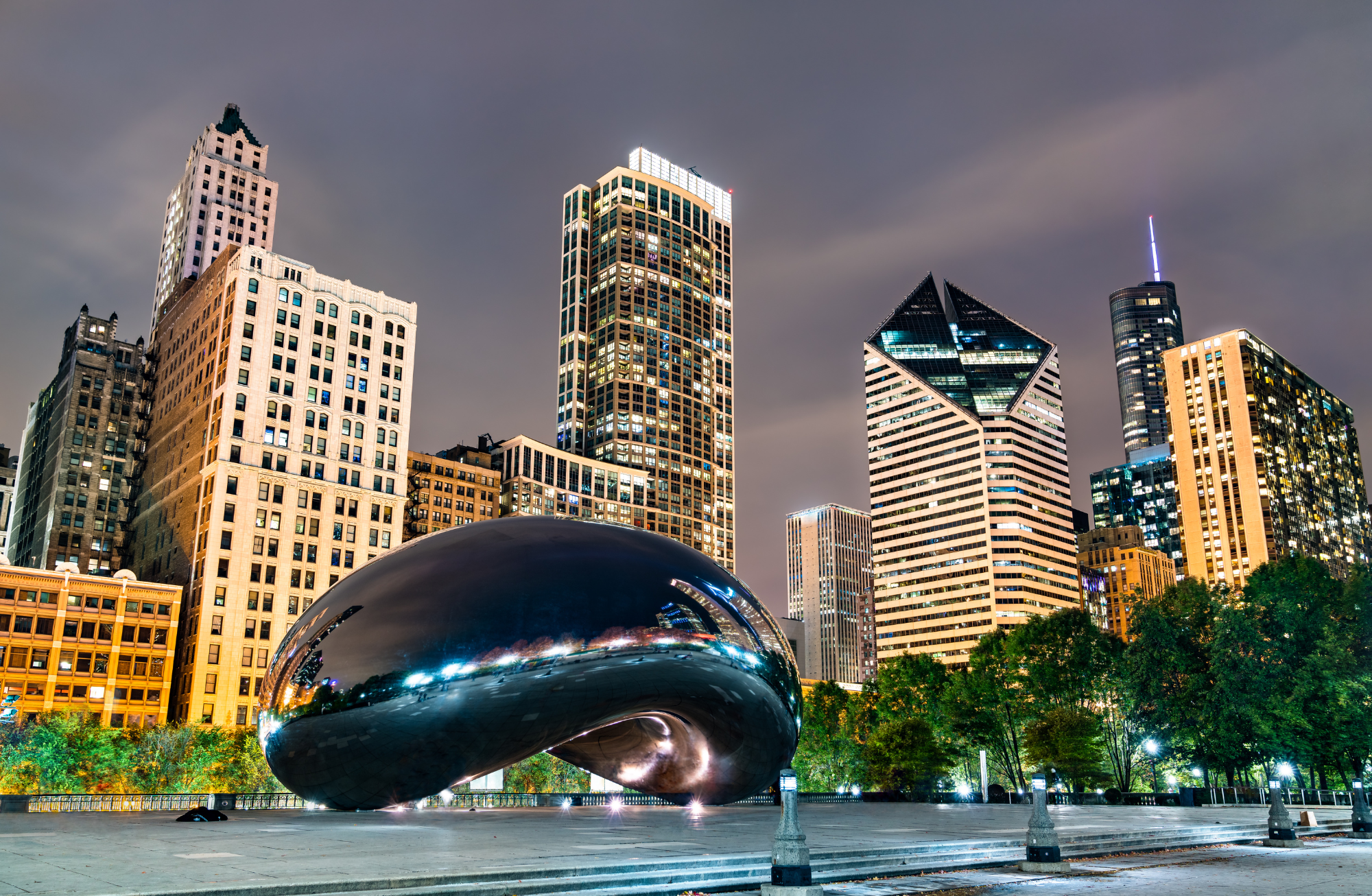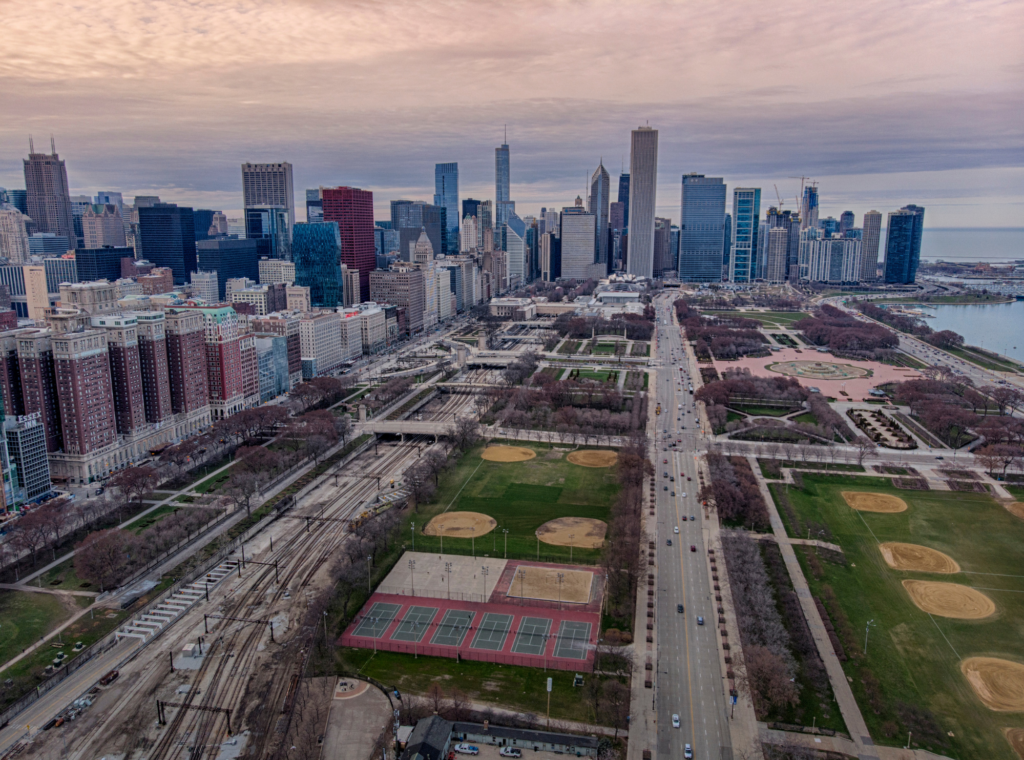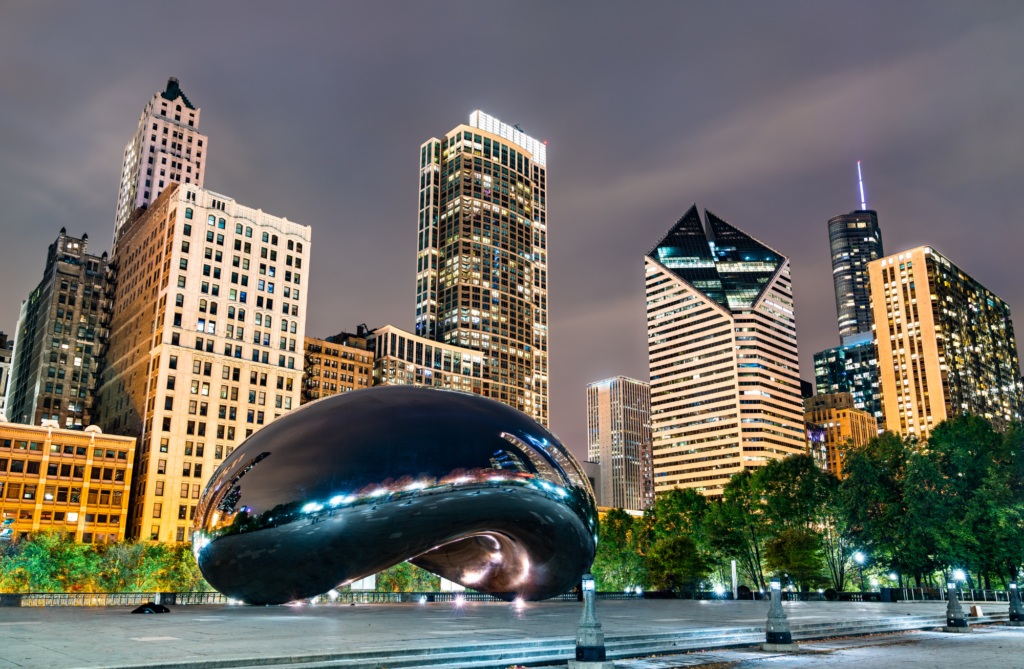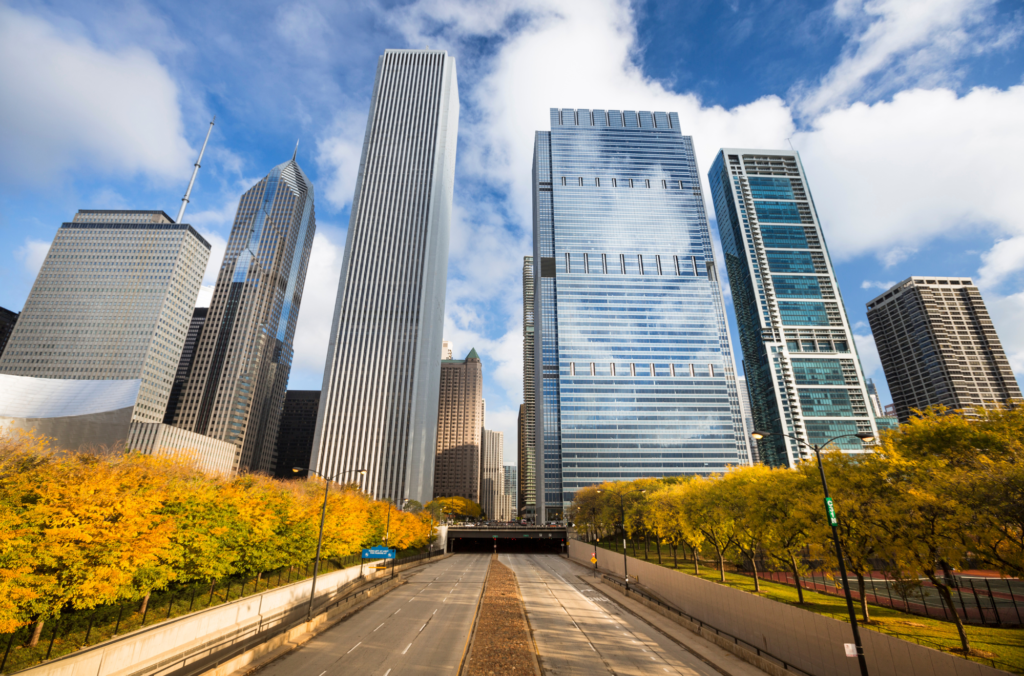
Iconic Chicago: Millennium Park – from the gritty past to the shiny future
Published on September 14, 2022
Our monthly series Iconic Chicago looks at some of the most famous locations in our city. We’ll explore the history of these places and why they have earned the love of residents and tourists alike. The latest installment of Iconic Chicago explores the history of Millennium Park. Next time you visit the park, take our self-guided walking tour!
Imagine it’s the mid-‘90s, and you’re visiting your dentist’s office on Michigan Ave. south of the Chicago River. You’re staring out the window and seeing skyscrapers all around, cars and pedestrians on the city’s bustling main street, Lake Michigan, Grant Park and the majestic Buckingham Fountain, and the Art Institute of Chicago. Then your eyes focus on the railroad tracks and parking lot between Randolph and Monroe Sts., and you wonder why such an eyesore exists in an otherwise picture-perfect urban setting.

Now imagine being the only person in the city capable of doing something about it.
“Let’s cover it with a park,” then-Mayor Richard M. Daley reportedly thought. It was a natural, obvious solution, and one that had been proposed in 1977. So why did it take so long?
For decades, it was believed that the Illinois Central Railroad owned the land, stemming from its 1852 agreement with the city. However, closer examination revealed that the city had only granted them the right to occupy the land under the provision that it be used exclusively for rail transportation. By the end of the 20th century, most of the tracks had been removed, so a lawsuit was filed to terminate the easement. Rather than deal with the legal hassle, the Illinois Central Railroad agreed to donate the rights to the land that wasn’t used by the railroad tracks, and the air above the space, back to Chicago in December 1997.
On March 30, 1998, Mayor Daley announced the plan to build Millennium Park, with the goal of having it open in the summer of 2000. The park’s estimated cost would be $150 million; then-Sara Lee CEO John Bryan spearheaded a campaign to bring in $30 million of that total from private donations. The remaining $120 million would be paid off through a 2,500-space parking garage to be constructed below the park. Officials stressed that the park would not be funded by taxpayers, nor would money be moved from neighborhood parks to build the new one.
Daley’s original vision for the 16.5-acre park consisted of indoor and outdoor performance venues, gardens, and a reflecting pool that would double as an ice-skating rink. Skidmore, Owings & Merrill, the architecture firm that designed such Chicago landmarks as the John Hancock Center and the Sears Tower, was brought in to design the project.
But this is Chicago, where Daniel Burnham’s dictum of “Make no little plans. They have no magic to stir men’s blood and probably will not themselves be realized” has long guided city planning efforts. The modest goals outlined by Daley would soon grow in scope, eventually adding eight more acres. By early 2000, the cost had increased to $230 million and the opening date had been pushed back a year. In the summer of 2001, the Chicago Tribune reported that it wouldn’t open until at least 2003, detailing how the rush to get the project completed by 2000, ironically, delayed the process through poor planning in the permitting process. And a Chicago tradition as old as the city itself—cronyism—factored into the awarding of a no-bid contract to an engineering firm run by someone who had worked for the city under Daley’s father.

Another reason for the escalation of the cost was due to Bryan’s solicitation of wealthy donors, who offered their input. As WTTW’s Daniel Hautzinger points out, the Pritzker family were willing to fund the outdoor stage on the condition that their friend Frank Gehry design it. Gehry’s two projects in the park, the Jay Pritzker Pavilion and the companion BP Pedestrian Bridge, cost $74.8 million, nearly 400% more than the projected cost of $18.8 million.
Further, the engineering work required to support the additions and build the garage turned out to be more complex than anticipated. A drainage system to the lawn at the pavilion and ramps for those with disabilities were among the modifications to the original design that needed to be made.
One hurdle the city needed to clear stemmed from Chicago’s earliest days. The land on which Millennium Park sits was deeded to the city in 1839 by the federal government on the condition that it be used as “Public Ground forever to remain vacant of Buildings.” The decree had been upheld numerous times over the years, with Aaron Montgomery Ward winning four lawsuits between 1890 and 1911 to prevent buildings from being added to the park. Subsequently, the city placed a height restriction for all future construction to avoid blocking the view of the lake.
In order to get around the limitations, Pritzker Pavilion, Crown Fountain, and Cloud Gate were classified as works of art, and are therefore exempt. Most of Harris Theater sits underground for the same reason.
The donors created a commission of art experts to choose what would become the park’s centerpiece. They selected two pieces, one by Jeff Koons and another by Anish Kapoor. But when Koons’ 150-foot sculpture proved infeasible for the site, Kapoor’s piece got the nod. Inspired by drops of liquid mercury, it consists of 168 pieces of stainless steel welded together. It stands 33 feet high, 42 feet wide and 66 feet long, and weighs 110 tons.

Although Kapoor had not yet named his creation, people instantly started calling it “The Bean.” The artist was horrified by the name, reportedly calling it “completely stupid,” but he eventually learned to appreciate the moniker. “I rather like the idea that the work’s come to have a colloquial name—’The Bean,’” he said. “That seems to say that the work’s entered a certain level of public consciousness. I like that.”
As with the Pritzker Pavilion, the Crown family took an active role in the process. After soliciting submissions, they went with Spanish artist Jaume Plensa, whose approach added interactivity. At the Crown Fountain, water falls from the tops of a pair of 50-foot glass brick towers situated 232 feet apart. The water forms a reflecting pool above the black granite floor, which retains its 1/8-inch depth due to a drainage system that continually filters the water.
Projected onto the towers are the faces of 1,000 Chicagoans, representing the breadth of the city’s diverse population. The faces randomly change every five minutes, concluding with one minute of water spewing out of the subject’s mouth, in a whimsical, modern take on gargoyles. The School of the Art Institute of Chicago contacted local community groups to recruit the volunteers. They sat in a dentist’s chair for 80 seconds while being filmed by a high-definition video camera, and the recording was slowed down to five minutes.
The Crown Fountain’s design was incapable of doubling as a skating rink, but the need to have something that brought people to the park year-round remained. The skating rink was moved instead directly north of the fountain and paired with a restaurant. The McCormick Tribune Ice Rink became the first section of the park to attract visitors, with a ceremony taking place on Dec. 20, 2001.

When the entirety of Millennium Park finally opened on July 16, 2004, it was four years behind schedule and, at $475 million, more than three times the projected cost. About $225 million of that came from donors, whose names are carved onto the peristyle—a slightly smaller replica of one that stood at the same spot from 1917-53—at Wrigley Square in the park’s northwest corner. For his efforts, Bryan, who died in 2018, was given an honorary street sign on the corner of Michigan Ave. and Washington St.
And although Cloud Gate was unveiled at the ceremony, it had yet to be sanded and polished to remove the visible seams and create the mirrored effect. The Bean was dedicated on May 15, 2006.
As much as the works of art in the park could be deemed modern or even futuristic, the layout hearkens back to Burnham’s original vision for Grant Park as a series of outdoor rooms. In Millennium Park, visitors use each room as a way to communicate with a different aspect of the city through art: its past (Wrigley Square), culture (Pritzker Pavilion), natural beauty (Lurie Garden), residents (Crown Fountain), and the cityscape (Cloud Gate).
Nowadays, there can be no doubt that Millennium Park was worth both the wait and cost. It has helped move downtown Chicago from out of its gritty, industrial past to something that showcases the city’s present and future.

The Adventure starts when you say it does.
All eATLAS Adventures are designed and built by experienced eATLAS Whoa!Guides. They're always on. Always entertaining. And always ready to go.
Check out our Adventures!